nacre mutants are missing melanophores
|
|
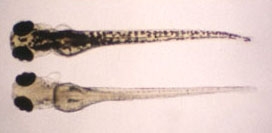 |
Crest-derived melanophores (black pigment cells) are missing in nacre mutants (bottom). Melanin production is normal in the retinal pigmented epithelium, suggesting that nacre is a mutation specific for neural crest not pigmentation. |
|
|
|
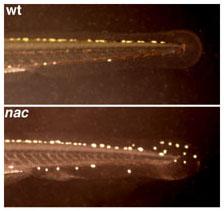
|
Iridophores (shiny pigment cells) are increased in nacre embryos by 50%. This phenotype may be due to transdifferentiation of melanophores into iridophores. Alternatively, iridophore number may be regulated by melanophores, and in nacre embryos increase when melanophores are missing. |
|
|
|
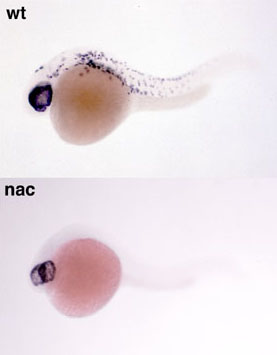
|
nacre mutants are missing melanophores from the very beginning. Using markers for very early melanoblasts (such as trp2, shown here), melanoblasts are not present in mutant embryos. |
|
|
|
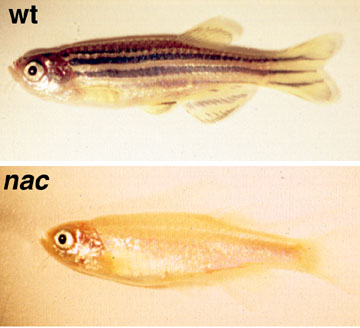
|
Homozygous mutant embryos are viable and fertile, but do not develop melanophores as adults. All other neural cret derivatives (such as neurons and craniofacial cartilages) appear normal. |
|
| |
|
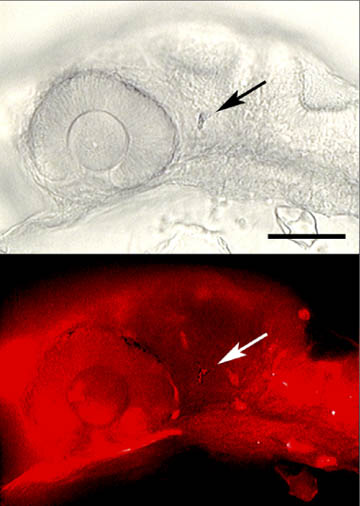
|
The nacre mutation acts cell-autonomously. Transplantation of wild type cells into nacre mutant embryos results in formation of occasional melanophores (arrow). Wild type cells are derived from fluorescently labeled hosts. Melanophores in mosaic embryos are always derived from wild type cells. |
|
| |
|
For more information on nacre click here
|
| |
|
|